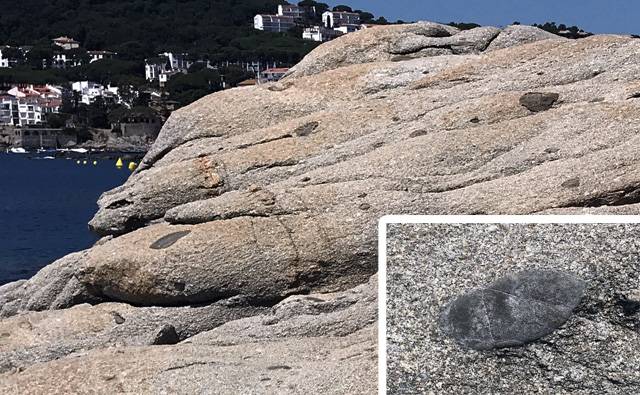Spanish Volcanoes & Potentially Pointless Pumice Properties
I didn’t know there were volcanoes in Europe or that I’d be stood in the middle of them… Someone has been keeping quiet about this!
Between the Pyrenees and the Costa Brava is a volcanic area, known as Garrotxa, containing thirty conical volcanoes. Suddenly, 11000 years after the last eruption took place, I turned up via Ryan Air and picked up some pumice out of the grassy cone. That’s a long time to lay about in the same place, pretty much in its original condition.
This gripping article was made possible as a result of:
a trip to Catalonia (click here).
Page Contents
Why Volcanoes?
Its all because of the same plate tectonics that created the Alps and the Pyrenees. As the African plate impacted the Iberian and Eurasian plates, the pressure created the mountain chains and caused faults running NW-SE through Catalonia. Volcanoes were formed along the fault lines as magma escaped.

(credit diagram: Woudloper)
Pumic Curiosity
Pumice is created as molten lava is flung out of volcanoes with force. The holes are created by gas suddenly expanding in the molten lava as pressure is released at the surface. The pumice I picked up from the crater of Montsacopa at Olot was quite small, and it was going to be a memento of the trip.

When we reached Llafranc, the cliffs were composed of thick lava flows studded with fallen pyroclasts generated by explosive venting. The volcanoes at Olot are way too small to have covered the 80 km (50 miles) distance to Llafranc, so there must have been more sources close by.

I was interested to know how light the pumice is compared to solid rock, so rather than do that in 15 seconds with Google, I started figuring it out myself.

A good way to compare the samples is by using the density of the material: the weight of the sample divided by its volume. Using the density will eliminate the differences in the size. For reference, I chose a solid granite pebble to represent normal volcanic rock
Measuring their weights accurately cannot be done on kitchen scales because the error is likely to be more than 1 gram, and we are dealing with just a few grams here. For that, I ordered a scale with a resolution of 0.01 grams. The difference in the measured weight of the smallest sample amounted to 6% which would have been quite poor.

The simplest way to measure the volume of a sample is to put it into a container of water and measure the displacement of the water. From the kitchen, I have a glass measure with 1 ml (millilitre) increments and 1 ml of water occupies a volume of 1 cm3 .

Results
With a bit of careful measurement, we find that about 40% of the rock is infused with gas to make pumice. The samples I had were light, but heavier than water, making it easier to measure the volume using the above method.

The variation in the pumice weight seems to be in part due to the size of the vesicles in the material although the material itself is could be a different density as well. We can see that the gas trapped in the lava has reduced the rock density by 40%. If we assume the weight of the gas amounts to zero, then the part of the rock that doesn’t contain gas is the other 60%.
As a rough-guide conclusion we can say that the rock has expanded by (40/60) * 100% = 66% extra in volume in order to become pumice – a froth made of rock.
So there you are – a fun fact you can pull out of nowhere at a party to win friends and influence people. Being rich, famous or incredibly good looking helps too. I’ll have to make do with the rock anecdote, obviously. I’ll file this one under Possibly Pointless but it was fun to do, which is good enough.
